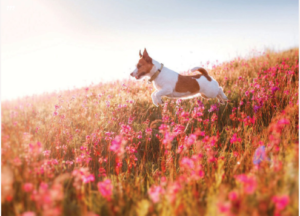Four Common Myths of Pet Health Care
 By Kate Lawrence
By Kate Lawrence
Everyone knows that when a dog’s nose is warm and dry, it means they’re sick. Right? Not so fast! When you’re in veterinary medicine, you hear a whole lot of animal-related myths like this one. But without a veterinary degree, how do you know if “they” have it right, or if it’s just an old wives tale? We’ve put together four of the most common animal myths we hear at Gulf Coast Veterinary Specialists–including whether or not a warm, dry nose means a trip to the vet–to help spread the word on these old wives “tails!”
- One of the most common myths we hear in our surgery department, for example, is something along the lines of, “I should let him lick his incision, because that helps it heal, right?” In actuality, allowing your pet to lick or chew at an incision after surgery is one of the worst things you can do to help the healing process. Animal’s mouths have lots of germs, and every lick is like taking a sponge full of bacteria and wiping it along the incision, which obviously leads to an increased risk of infection. Licking or chewing an incision can also lead to dehiscence, which is when an incision opens up. This is especially true for cats, whose rough tongues can do serious damage to an incision with just a few licks!
- Another common myth is the thought that a cold, wet nose is good, and a warm, dry nose is bad. In reality, however, an animal’s noses change temperature and moistness all the time throughout the day. The nose being warm and dry is not an indicator of illness or fever, nor does a cold, wet nose definitively mean your pet is healthy. The only way to tell for sure if your pet has a fever is to take their temperature with a thermometer (generally rectally) and have a veterinarian evaluate your pet. If you are concerned that your dog may be ill, bring him or her into Gulf Coast Veterinary Specialists for a check-up.
- For many years it was a commonly held belief that dogs can’t see in color. But this is a myth! Dogs do, in fact, see in some colors, and it is part of the process they use to identify and classify the world around them. Dogs see color differently than people–they are able to distinguish hues of blue, purple, and gray that humans cannot distinguish, but they do not have the visual center for red tones, making it difficult for them to differentiate primary colors like red, blue and yellow.
- Finally, everyone has heard the old adage that an “old dog can’t learn new tricks.” Well, that’s just plain not true! In fact, many pet owners will tell you from personal experience that old dogs CAN learn new tricks. Take Lady for example. As a 12 year, this Golden Retriever learned how to roll over… no small trick! So the next time someone tries that excuse, let them know that with the right training, any dog can learn a new trick, no matter how old they are.
